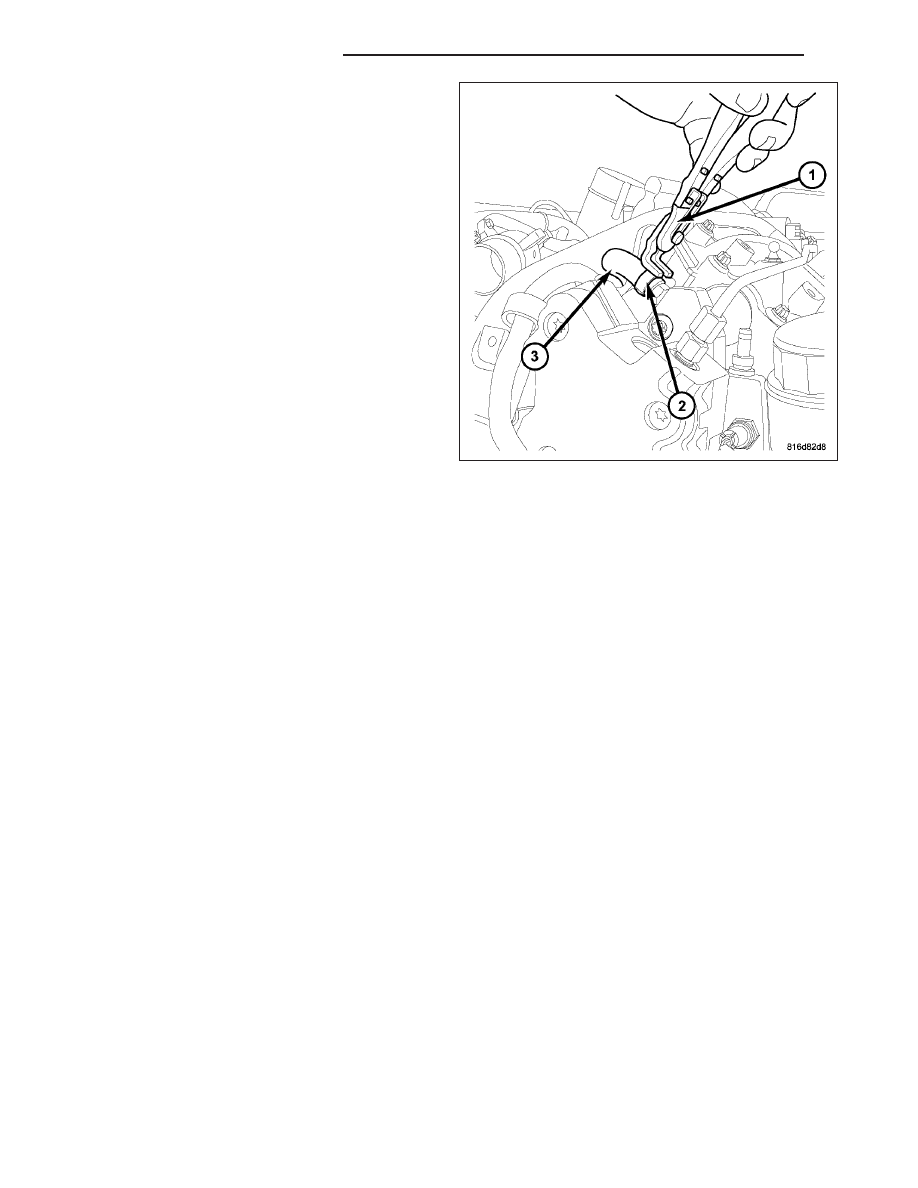Content .. 1756 1757 1758 1759 ..
Chrysler 300/300 Touring/300C, Dodge Magnum. Manual - part 1758

4. Install inlet supply line clamp using Fuel Line Pliers
9539.
5. Install return line clamp using Fuel Line Pliers
9539.
CAUTION: Do not crimp or bend fuel line. Inspect
sealing cone at line; replace line if compression
exists.
6. Install high pressure fuel line retaining nuts. Torque
nuts to 33 N·m (24 ft.lbs.).
7. Install high pressure line support bracket.
8. Install negative battery cable.
9. Install the engine cover.
10. Start engine and check for leaks.
14 - 106
FUEL DELIVERY - DIESEL
LX